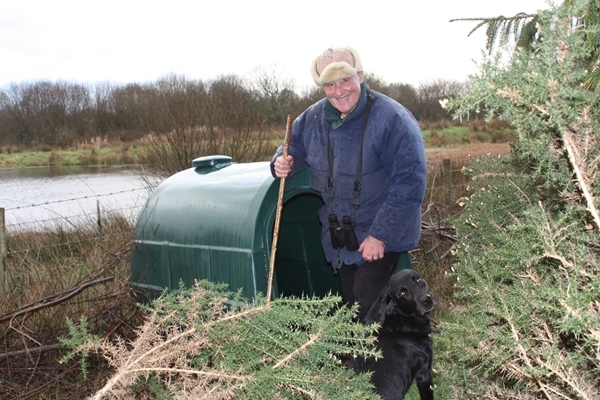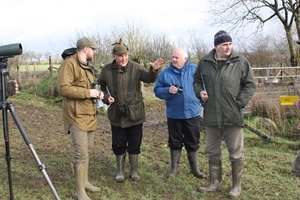
FARMER and conservationist Terry Mills hosted a bird count at his farm in Cruglas, near Swyddffynon in Ceredigion to mark the start of this year’s Big Farmland Bird Count (BFBC).
As well as providing valuable information on wildlife in the Welsh countryside, the Game & Wildlife Conservation Trust-led count highlights farmers’ fantastic efforts to reverse the decline in farmland birds.
Cruglas boasted an impressive 30 species on the day, including several in serious decline such as starling, house sparrow, redwing and fieldfare, a tribute to the effort Terry Mills has put into improving habitat on his farm.
Wales advisor Matt Goodall said: “We want to encourage all farmers in Wales to spend 30 minutes bird-spotting on their farms this week. It’s easy to do, simply jot down any birds you see and submit the count by post or online at www.bfbc.org.uk”
“Cruglas is a wonderful example of how, with a mix of tree planting, fencing and pond digging and supplementary feeding, the wildlife will return.”
 This year, the count is sponsored for the first time by NFU Cymru and aims, in part, to identify what support farmers need to help provide food and habitat for wildlife on their farms.
This year, the count is sponsored for the first time by NFU Cymru and aims, in part, to identify what support farmers need to help provide food and habitat for wildlife on their farms.
NFU President Minette Batters said: “It’s becoming an important national event where thousands of farmers and growers around the country are able to take stock of and importantly, take pride in what they find on their land.
“The NFU supports initiatives like the Big Farmland Bird Count as without sound management of the environment, enhancement of habitats, protection of wildlife and support for pollinators and soils, we do not have farming businesses.”
The count, now in its sixth year which attracted a record-breaking number of farmers last year, runs until midnight on February 17th.
Here is how you take part:
- On any day until 17th February spend about 30 minutes recording the species and number of birds seen on one particular area of the farm. You can choose your own location but somewhere with a good view of around 2 ha of the farm would be ideal.
- Ideally, counting should take place at first light as this is when the birds are most active. However, it is more important that you take part, so timings should suit you.
- Use a notebook or our helpful count sheet to record the species you see in the field. download and print our helpful count sheet.
- You can submit the count at www.bfbc.org.uk If you don’t have access to a computer you can return your count findings by post.
Notes to editors
The Game & Wildlife Conservation Trust – providing research-led conservation for a thriving countryside. The GWCT is an independent wildlife conservation charity which has carried out scientific research into Britain’s game and wildlife since the 1930s. We advise farmers and landowners on improving wildlife habitats. We employ more than 60 post-doctoral scientists and other research staff with expertise in areas such as birds, insects, mammals, farming, fish and statistics. We undertake our own research as well as projects funded by contract and grant-aid from government and private bodies.
For information, contact:
Eleanor Williams
Telephone: 07592 025476
Email: press@gwct.org.uk